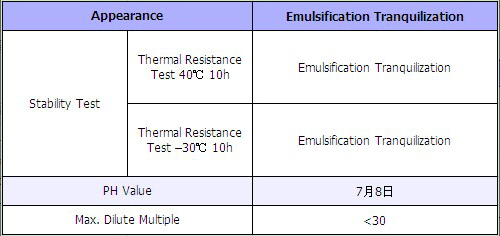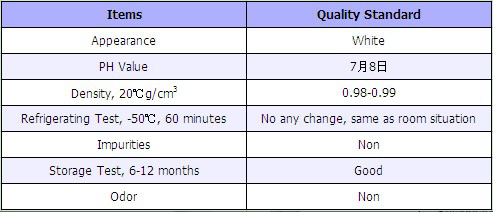Factory directly sale Special Wax in Agriculture and Forestry to Sheffield Manufacturer
Short Description:
Product Detail
Product Tags
Factory directly sale Special Wax in Agriculture and Forestry to Sheffield Manufacturer Detail:
(1)YNE4 Series Special Molding Moisturized Wax for Fruit Trees
In order to protect fruit trees and shrubs from desiccation during winter dormancy or transportation or to keep moisture in summer drought, Special Molding Moisturized Wax is spayed on the surface of trees, forming the protecting film in surface of trees. The film has some adequate micro pore that could efficiently reduce the losses of moisture in the surface of the trees, and it simultaneously ensures physiological respiration of the trees.
(2) YNE5 Series Special Preventing Frostbite Wax for Trees
(3) In large northern areas of our country, the winter season is severe cold and the spring season is more heavy windy.
The early winter and the late spring’s frost are quite disadvantage to young plant, the weather is particularly abnormal coldness after spring comes, and frequently injures these trees. As a result young plant is cold death. YNE5 Series Special Preventing Frostbite Wax for Trees not only has anti-freezing effect on trees but also well effect on anti-sprouting etc. Spraying on branches and leaves of trees can make exuberant growth of foliage.
Product detail pictures:

Dedicated to strict high-quality management and considerate shopper company, our experienced team associates are normally available to discuss your requirements and ensure full shopper gratification for Factory directly sale Special Wax in Agriculture and Forestry to Sheffield Manufacturer, The product will supply to all over the world, such as: Costa Rica , Boston , Burundi , So that you can utilize the resource from the expanding info in international trade, we welcome shoppers from everywhere on-line and offline. In spite of the good quality solutions we offer, effective and satisfying consultation service is supplied by our specialist after-sale service team. Product lists and detailed parameters and any other info weil be sent to you timely for your inquiries. So please make contact with us by sending us emails or call us if you have any questions about our corporation. ou may also get our address info from our web page and come to our company to get a field survey of our merchandise. We are confident that we are going to share mutual achievement and create strong co-operation relations with our companions in this marketplace. We're searching forward for your inquiries.
Watch Invensas’ xFD® performance compared side-by-side to conventional packaging technology. This video showcases the company’s proven multi-die DRAM package technology and highlights its performance, temperature and cost advantages.
Website:https://www.hongyicasting.com/
Ningbo HongYi Machinery Co.,Ltd. is an export-oriented enterprise located in Ningbo which is the 2nd biggest container sea port in China. our company integrates Manufacturing and Exporting with owned Precise Investment Casting (Lost Wax Casting) foundry specialized in manufacturing various material of Casting parts & CNC machining works








